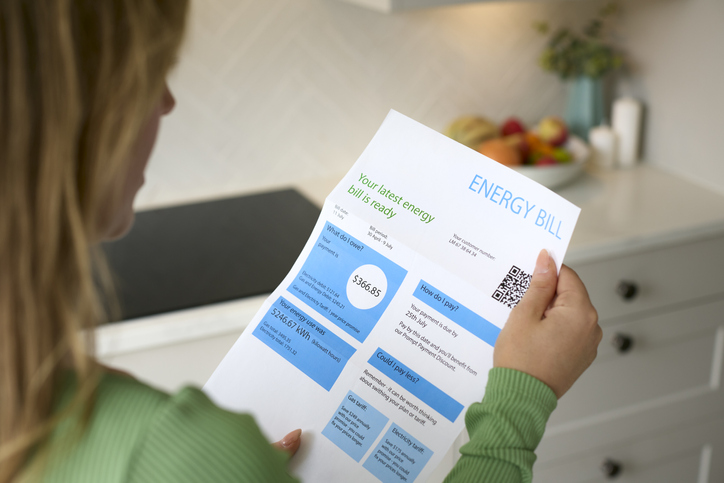Americans Saw Higher Energy Expenses in 2023

In 2023, 69% of Americans had higher energy bills than in years past, 1 in 3 struggled to pay energy bills and 67% tried to cut energy-related costs, according to a report by HOP Energy.
Nationwide, the average cost of a month’s electric bill was about $201. Two regions were above this average, with New England’s average bill being $245 (22% above) and the South’s being $213 (6% above). Americans in the Mid-Atlantic paid $194 (3% below) and $192 (4% below) in the West. The lowest average electric bills were found in the Midwest at $180, which was 10% below the national average.
Of the 900 Americans surveyed, 35% said they were finding it difficult to pay their energy bills in 2023. Notably, those in the South struggled the most, with 50% finding it difficult to pay.
The survey found that the majority of Americans saw higher energy costs in the summer compared to the winter, with 56% saying they had higher energy costs in the warmer season and 39% saying their bills rose in the colder months.
For the 67% of Americans aiming to cut energy costs this year, the top ways money-saving methods were using energy-efficient lightbulbs (64%), unplugging electronics when not in use (54%), setting their washing machines to cold (45%), opening windows instead of using the air conditioner (42%) and setting home temperatures closer to outdoor temperatures (34%).
As winter approaches now, it may be time to think about saving energy as temperatures drop. Nationwide, the average household thermostat temperature in the winter is 69 degrees, with New England’s being the coolest at 69.4 degrees and the South’s being the warmest at 70.1 degrees.
To save money, 56% keep their home temperatures lower than their preferred temperatures to save money during the colder months. Sixty-five percent prefer to bundle up in warm clothing rather than turn on the heat.
The most popular month for turning on the heat is October, with only New England waiting until November. The majority of Americans heat their homes by furnace (48%), while other methods include boiler/radiant heat (13%), heat pump (12%), electric baseboard heat (11%), space heater (6%) and fireplace or wood burning stove (3%). Additionally, 57% found smart thermostats saved them money.
Winterizing is a common way to prepare a home for colder weather and icy precipitation. Doing so can help homeowners prevent damage and save energy costs in the long run. Prior to winter 2023, 28% of survey respondents planned on winterizing their homes ahead of time. Americans’ anticipated costs for winterizing by region were:
- New England: $605
- South: $515
- Mid-Atlantic: $336
- West: $334
- Midwest: $181
The survey found that the most common winterizing methods among Americans included inspecting the heating system (50%), applying plastic insulation to windows (48%), installing door sweeps (47%), cleaning gutters (40%), applying weather stripping (39%) and reversing ceiling fans (37%).
Topics
Share this post
Member Discussion
Recent Articles
-
Tri-County Realtor® Leads Efforts to Fight Hunger
- November 21, 2024
- 2 min. read
Heather Griesser-LaPierre, a member of Tri-County Suburban Realtors®, led an initiative last month to pack 238,000 meals for hurricane victims alongside fellow Realtors® and other volunteers.
-
9 Tips to Save Money When Moving
- November 20, 2024
- 3 min. read
For new homeowners, moving costs can add up quickly. Here are nine tips to keep moving costs down, from Point2.
-
Earn Pa. CE Credit at Triple Play: Agency Relationships and Disclosures
- November 19, 2024
- 2 min. read
Taught by two PAR associate counsels, “Agency Relationships and Disclosures in Pennsylvania” is a three-hour course that is a Pennsylvania SREC-required topic for the 2024-2026 continuing education cycle.
Daily Emails
You’ll be the first to know about real estate trends and various legal happenings. Stay up-to-date by subscribing to JustListed.



